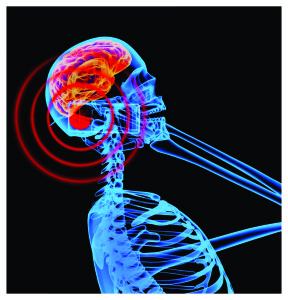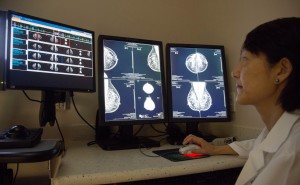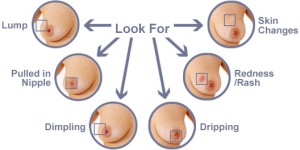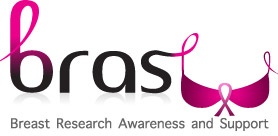Half of Girls Avoid Secondary School Sports Due to Concerns About Their Breasts
By Rachel Pells, Published by The Independent, January 19, 2016
As many as half of all girls at secondary schools are actively avoiding sport due to embarrassment or pain caused by their breasts and need better advice on which bras to wear, research has found. Out of more than 2,000 adolescent girls surveyed by academics, very few knew which sort of bra to wear or how to avoid breast pain while exercising.
The results, taken from schoolgirls aged between 11 and 17, found that three-quarters of those surveyed had at least one concern about their breasts, including embarrassment when getting changed for sports and pain during exercise. Their concerns peaked at the age of 14, with 87 per cent saying they wanted to learn more about breast health, according to the Research Group in Breast Health at Portsmouth University. Read More >>
Health Conditions in Which Vitamin D Plays an Important Role
The One Test All Doctors Need to Order For Their Patients
By Dr. Mercola, Mercola.com, January 6, 2015
Vitamin D is crucial for good health, and may be one of the simplest solutions to a wide range of health problems, from diseases of the eyes to the bowels, and conditions rooted in chronic inflammation and immune dysfunction in particular. Vitamin D deficiency is common around the world, even in sundrenched areas, yet many people, including physicians, are unaware they may be lacking this important nutrient. Even the Indian Medical Association1 is pushing for a nationwide awareness campaign, noting that vitamin D deficiency is prevalent in India, making people more vulnerable to chronic diseases such as diabetes, heart attacks, stroke and cancer.
Despite its name, vitamin D is actually a steroid hormone, which you get primarily from either sun exposure or supplementation, along with some foods. Many of its health benefits are due to its ability to influence genetic expression. Read More >>
Sugar in Western Diets Increases Risk for Breast Cancer Tumors and Metastasis to the Lungs
Posted on January 2, 2016 in Science Blog.com
The high amounts of dietary sugar in the typical Western diet may increase the risk of breast cancer and metastasis to the lungs, according to a study at The University of Texas MD Anderson Cancer Center.
“We found that sucrose intake in mice comparable to levels of Western diets led to increased tumor growth and metastasis, when compared to a non-sugar starch diet,” said Peiying Yang, Ph.D., assistant professor of Palliative, Rehabilitation, and Integrative Medicine. “This was due, in part, to increased expression of 12-LOX and a related fatty acid called 12-HETE.”
Previous epidemiological studies have shown that dietary sugar intake has an impact on breast cancer development, with inflammation thought to play a role.
“The current study investigated the impact of dietary sugar on mammary gland tumor development in multiple mouse models, along with mechanisms that may be involved,” said co-author Lorenzo Cohen, Ph.D., professor of Palliative, Rehabilitation, and Integrative Medicine. “We determined that it was specifically fructose, in table sugar and high-fructose corn syrup, ubiquitous within our food system … Read More >>
What If Everything Your Doctors Told You About Breast Cancer Was Wrong?
Don’t look down. Therese Taylor repeats this mantra when she’s rising out of bed in the morning. Don’t look  down. She says it when she’s standing in the shower. She says it when she’s brushing her long brown hair so that it hangs over the vacant space once occupied by her left breast. Don’t think about what you’ve lost.
down. She says it when she’s standing in the shower. She says it when she’s brushing her long brown hair so that it hangs over the vacant space once occupied by her left breast. Don’t think about what you’ve lost.
She’s lost so much. Her breast. Her identity as a healthy person. Her uncomplicated sex life. Her faith in the medical profession.
Taylor has gained something too—a fury that’s uncomfortable to express when other women are dying from breast cancer and her doctors tell her she’s lucky. But when she thinks of the fear her three children endured and the months of post-surgical shoulder pain so sharp that she worried a tumor had invaded her bones, the 55-year-old Mississauga, Ontario, resident doesn’t feel lucky at all. She feels rage. Her doctors implied she had cancer and said that if she cut off her breast, she would live. Now she knows it was never that simple.
No one—not her physician or her surgeon or the pathologist or nurse or anyone else—ever took the time to explain what her mammogram and biopsy had found.
Despite what her doctor said (“It’s indicative of cancer”), the fact was that the abnormality on Taylor’s mammogram—ductal carcinoma in situ, or DCIS— is not considered a cancer by many experts, and it had only a small chance of ever progressing into an invasive cancer. The probability that it would kill her was even slimmer, about 3 percent. The thing in her breast was not a ticking time bomb, and were it not for the mammogram, she probably never would have known it was there. Read More>>
Electromagnetic Hypersensitivity Syndrome (EHS)
“Are You Allergic to the Internet?”
By Dr. Mercola, published June 21, 2008, Dr. Mercola website. Over 221,177 views.
 “Electromagnetic Hypersensitivity Syndrome (EHS) is a condition in which people are highly sensitive to electromagnetic fields. In an area such as a wireless hotspot, they experience pain or other symptoms.
“Electromagnetic Hypersensitivity Syndrome (EHS) is a condition in which people are highly sensitive to electromagnetic fields. In an area such as a wireless hotspot, they experience pain or other symptoms.
People with EHS experience a variety of symptoms including headache, fatigue, nausea, burning and itchy skin, and muscle aches. These symptoms are subjective and vary between individuals, which makes the condition difficult to study, and has left experts divided about the validity of such claims.
More than 30 studies have been conducted to determine what link the condition has to exposure to electromagnetic fields from sources such as radar dishes, mobile phone signals and, Wi-Fi hotspots.This makes logical sense since your nervous system is a primary site impacted by both chemicals and electromagnetic fields. And if your nervous system has been damaged from toxic exposures you may also be more susceptible to EHS as well.”
“Two other factors that play a vital role here are: sleeping well and getting plenty of appropriate sun exposure.
Why? Because sleep and sunlight have a direct impact on your melatonin levels, and melatonin is actually one of the most potent detox agents that eliminate metals from your brain naturally. Increasing your melatonin production can be done in three ways:
1. Sleeping in absolute darkness
2. Getting at least an hour of exposure to bright daylight each day
3. Reducing the electro-pollution in your sleeping quarters (i.e. remove electrical alarm clocks, cordless home phones and wireless phones from your bedroom)
Melatonin is not only the most important detox agent for your brain; it is also a very important anti-inflammatory. And as I stated earlier, electromagnetic radiation can make inflammation worse by creating more potent mycotoxins, so reducing inflammation is vital.” Read more about EHS symptoms>>
Woman says Wi-Fi allergy killed her daughter
Author Katie Dowd; Published in the SF Gate, December 1, 2015
Is the signal from a router enough to make you seriously ill?
A mother in England is claiming a crippling allergy to Wi-Fi exacerbated by school routers compelled her 15-year-old daughter to end her life. Jenny Fry committed suicide earlier this year, and her mother Debra says she left behind letters saying “she couldn’t cope with her allergies from wifi anymore.” Fry says her daughter suffered from electro-hypersensitivity (EHS), a condition that made Jenny tired and gave her headaches and bladder problems.
Debra Fry alleged at an inquest that her daughter’s school was made aware of her condition and did nothing to help her. Her mother says that Jenny was seated near routers and would often have to disappear from the classroom to find “unused classrooms” where she could work. The school punished her with detention for leaving the classroom, her mother claims.
“As soon as Jenny walked away from a router she felt instantly better so she was almost hunting out areas of the school which weren’t covered by Wi-Fi just to do her work,” Fry told the Telegraph. “I remember saying to the school ‘if someone had a peanut allergy you wouldn’t make them work surrounded by peanuts’.”
Oxfordshire coroner Darren Salter said there were no medical notes proving that Jenny was diagnosed with EHS, and Jenny’s school says its Wi-Fi routers were up to code.
There is a legal precedent for winning damages from Wi-Fi allergies. In August, a French court awarded a woman $32,000 after she said she was forced to move out of the city to escape the constant wireless emissions. Continue Reading >>
Nightly EMF Exposure Linked to Breast Cancer
Excerpt from Linda Bamber’s presentation: “Electro magnetic Frequencies and Your Health”
Charles Graham, PhD, physiologist at the Midwest Research Institute in Kansas City, MO., has conducted studies indicating that electromagnetic radiation alters hormone levels. When women were exposed to elevated levels of EMR overnight in the laboratory serum estrogen levels increased. Studies have shown that elevated estrogen levels are a risk for cancer development. Also, testosterone levels in men were reduced following exposure to EMR. Reduced testosterone levels have been linked to prostate and testicular cancers.
Much is written today about the harmful effects of “estrogen mimickers” produced from the multitude of many chemicals and pollutants in the environment. Indeed, these products that mimic the effects of estrogen have a damaging effect on the body in terms of their disruption to proper hormonal balance. Dr. Graham believes that electromagnetic radiation may fit the description of an endocrine disruptor … Read More>>
Keep That Cell Phone Out of Your Bra
Article by Devra Lee Davis, published in The SFGate on October 23, 2010
For many young women today, tucking cell phones in the bra has become a cool, hip way to have simple access to these essential devices. Most of us have no idea that cell phones are small microwave radios that should not be kept directly on the body. The ways some people are using their phones today could increase their risk of developing breast cancer and other diseases tomorrow. A cell phone’s microwave radiation seeps directly into soft fatty tissue of the breast.
It’s too late for Andrea X, a young, active mother of three from Southern California. For more than six years, this vegetarian and runner drove her children  everywhere, with her cell phone tucked snugly into her sports bra. She used her hands-free headset and was on the phone for four to five hours a day. Often her chest or ear would redden, but she thought little of it. This spring she developed a malignant tumor right where her phone had sat on her breast. No one in her family has ever had breast cancer.
everywhere, with her cell phone tucked snugly into her sports bra. She used her hands-free headset and was on the phone for four to five hours a day. Often her chest or ear would redden, but she thought little of it. This spring she developed a malignant tumor right where her phone had sat on her breast. No one in her family has ever had breast cancer.
Could all this be a coincidence? Of course. But her doctor, and the physicians of four other women under the age of 40 with similar stories, are deeply concerned that cell phones can cause cancer in women who store them on their torsos. Continue reading >>
Can thermography replace mammography? Yes, says Xerox
Published by The Hindu Business Line, November 12, 2015
Known the world over for its photocopiers and printers, Xerox Corporation has diversified into several services. Its unit Xerox Research Centre India (XRCI), with 90 researchers on board, has been working on areas such as healthcare, transportation, and education. XRCI’s Director Manish Gupta told BusinessLine in an email interview that in healthcare, the focus is on cutting edge imaging technologies, such as for breast cancer.
What are XRCI’s future plans for healthcare services in India, especially with regard to patented technologies?
One example of our projects is non-contact, non-invasive imaging of body vitals.
Our researchers have developed technologies that — through video cameras — can sense the state of body vitals, including respiration rate and heart rate, helping in detection and diagnosis of certain diseases.
For instance, cardiac arrhythmia can be detected through a simple analysis of video signals out of a web camera. We are taking that one step further and looking at developing a thermal camera screen for breast cancer.
Our goal is to establish thermography as superior to mammography. Read More>>
Doctors and health advocates react to breast cancer screening changes
Posted by CBS Channel 6 News, Richmond, VA, November 6, 2015, by Reba Hollingsworth
RICHMOND, Va. — Two weeks after the American Cancer Society (ACS) dropped a bombshell by changing its recommendations on when a woman should get a mammogram, the voice of opposition has only gotten louder and some doctors have started to push back.
Radiologist Dr. Priti Shah with VCU Massey Cancer Center has recently spent a lot of time answering questions about the new recommendations.
“We are getting questions from patients about what they should do,” Dr. Shah said. Read More>>
Breast Biopsies Leave Room for Doubt, Study Finds
By Denise Grady, Posted March 17, 2015 on ACCT Blog (Originally in New York Times)
Breast biopsies are good at telling the difference between healthy tissue and cancer, but less reliable for identifying more subtle abnormalities, a new study finds.
Because of the uncertainty, women whose results fall into the gray zone between normal and mali . . . gnant — with diagnoses like “atypia” or “ductal carcinoma in situ” — should seek second opinions on their biopsies, researchers say. Misinterpretation can lead women to have surgery and other treatments they do not need, or to miss out on treatments they do need.
The new findings, reported Tuesday in JAMA, challenge the common belief that a biopsy is the gold standard and will resolve any questions that might arise from an unclear mammogram or ultrasound.
In the United States, about 1.6 million women a year have breast biopsies; about 20 percent of the tests find cancer. Ten percent identify atypia, a finding that cells inside breast ducts are abnormal but not cancerous. About 60,000 women each year are found to have ductal carcinoma in situ, or D.C.I.S., which also refers to abnormal cells that are confined inside the milk ducts and so are not considered invasive; experts disagree about whether D.C.I.S. is cancer. Read More>>
Selenium: A Neglected Mineral for Gut and Thyroid Health?
Posted on Paleo Leap blog, information cited from study published by NCBI
Excerpt: “Selenium is an antioxidant mineral. Most fruits and vegetables have at least a little, fish and seafood have more, and Brazil nuts are extremely rich in it. When you eat selenium, it’s sent to the liver, where it’s incorporated into several different types of selenoproteins. The antioxidant, anti-inflammatory action of selenoproteins in the body is how selenium has most of its health effects.*” Read More>>
Selenium Citrate is distributed by BRAS – Available through Amazon – Purchase today
*These statements have not been evaluated by the Food and Drug Administration. This product is not intended to diagnose, treat, cure or prevent any disease.
New Laws Add a Divisive Component to Breast Screening (“Dense” Breast)
By Denise Grady; Posted October 24, 2012 in the New York Times
In a move that has irked medical groups and delighted patient advocates, states have begun passing laws requiring clinics that perform mammograms to tell patients whether they have something that many women have never even heard of: dense breast tissue.
Women who have dense tissue must, under those laws, also be told that it can hide tumors on a mammogram, that it may increase the risk of breast cancer and that they should ask their doctors if they need additional screening tests, like ultrasound or M.R.I. scans.
The issue is pitting angry patients against the medical establishment. Advocates say women have a right to know, but medical groups argue that the significance of tissue density is uncertain and that reporting it may panic women and lead to an avalanche of needless screening tests and biopsies.
Laws requiring disclosure have been passed in Connecticut, Texas and Virginia, and most recently in California and New York … Read More >>
Breastfeeding May Reduce Risk Of Aggressive Breast Cancer
By J Dionne; Posted October 29, 2015 in University Herald Reporter
New research suggests that breastfeeding may lower a woman’s risk of developing breast cancer.
An international team of researchers found that breastfeeding is associated with a lower risk of developing an aggressive form of breast cancer called hormone-receptor negative. This new combined evidence shows the risk was reduced by up to 20 percent in women who breastfed …” Read More>>
A Lump Is Diagnosed As Male Breast Cancer
By Silvia Foster-Frau; Posted October 25, 2015 in The Greenwich Time
Until this year, Louis “Jerry” Braun hadn’t been to the hospital since he had his tonsils removed 63 years ago. He never expected that one of his closest brushes with death would begin with a lump in his right breast.
“I found this hard lump and it started to itch. It wasn’t looking good,” said Braun. He went to a Mount Kisco, N.Y., hospital. At first, they thought it was just a cyst. Then, a benign tumor.
“They sent the tumor to make sure it was benign. It was not,” said Braun. It was stage two breast cancer. His next stop was Greenwich Hospital and Dr. Lisa Weichmann, a breast surgical oncologist.
“He came in saying that basically his goal was to finish up with his calculus class, because he was helping these kids get into college and that was a top priority for him,” said Weichmann. Now, he is one of 2,350 new cases of male breast cancer estimated to be diagnosed in the United States by the end of this year. He is also a breast cancer survivor. Read More >>
Understanding The Role of DITI* in Breast Screening
Written by ACCT; Posted May 1, 2012 on the ACCT Blog
The benefits of DITI do vary between age and risk groups. With the pre mammogram age group (under 50) the benefits of screening to detect any findings or changes that justify additional testing or closer monitoring are simple. With any positive DITI findings in this younger age group, any mammogram and ultrasound sensitivity and specificity will be increased with the objective DITI findings targeting a dysfunction and location and providing decision making information in women that would not have otherwise been tested.
It takes years for most cancers to develop to the stage that they can be detected with mammogram or ultrasound (dense enough for location and biopsy) so DITI is ideally placed as a screening tool to identify changes over time in the ‘early’ development stages, before there is more advanced pathology that can be detected with other tests . . . Read More>>
*DITI – Digital Infrared Thermal Imaging
*Note: Thermography is not a replacement for Mammography. We recommend a balanced health approach that includes both prevention and traditional medical approaches.
American Cancer Society, in a Shift, Recommends Fewer Mammograms
By Denise Grady; Published October 20, 2015 by The New York Times
 One of the most respected and influential groups in the continuing breast-cancer screening debate said on Tuesday that women should begin mammograms later and have them less frequently than it had long advocated.
One of the most respected and influential groups in the continuing breast-cancer screening debate said on Tuesday that women should begin mammograms later and have them less frequently than it had long advocated.
The American Cancer Society, which has for years taken the most aggressive approach to screening, issued new guidelines on Tuesday, recommending that women with an average risk of breast cancer start having mammograms at 45 and continue once a year until 54, then every other year for as long as they are healthy and likely to live another 10 years.
The organization also said it no longer recommended clinical breast exams, in which doctors or nurses feel for lumps, for women of any age who have had no symptoms of abnormality in the breasts.
Previously, the society recommended mammograms and clinical breast exams every year, starting at 40.
The changes reflect increasing evidence that mammography is imperfect, that it is less useful in younger women, and that it has serious drawbacks, like false-positive results that lead to additional testing, including biopsies. Read More >>
(Photo and Credit: A doctor reading mammograms at the University of Texas M.D. Anderson Cancer Center in Houston. The American Cancer Society said women should begin mammograms later and have them less frequently. Credit Ed Kashi/VII, via Corbis)
U.S. Breast Cancer Cases To Increase 50 Percent by 2030: NCI report
Posted April 23, 2015 Written by the American College of Clinical Thermology (ACCT)
by Lisa Chamoff , DOTmed contributing reporter, April 22, 2015
The number of breast cancer cases in the U.S. will be 50 percent higher in 2030 than it was in 2011, with an estimated 441,000 cases in 15 years, according to new research by the National Cancer Institute (NCI).
The research, presented this week at the American Association for Cancer Research annual meeting, shows a marked increase in estrogen receptor (ER)-positive tumors in women older than 70. Part of the increase is due to the fact that women are living longer, and also due to screening technology that enables doctors to diagnose smaller, in situ tumors and invasive tumors, which are mostly detected via mammography.
The forecast comes the same week that the U.S. Preventive Services Task Force updated, but did not change, its breast cancer screening recommendations, which state that women age 50 to 74 should only be screened once every two years, while women in their 40s should discuss screening with their doctors.
Dr. Philip Rosenberg, a senior investigator in the division of cancer epidemiology and genetics at the NCI, says the forecast was made without the details of how the cancer is diagnosed. Rosenberg and his colleagues did the study in order to help the oncology community plan for the future and optimize prevention and treatment strategies.
“Having a good guess of the future can help planners struggling with difficult issues, like mammography,” Rosenberg told DOTmed News.
Rosenberg and his colleagues predict that while the proportion of new breast cancer cases among women ages 50 to 69 is expected to decrease from 55 percent in 2011 to 44 percent in 2030, the proportion of cases in women ages 70 to 84 is expected to increase from 24 percent to 35 percent.
“Understanding the optimal way to manage cases in that age group would be wonderful,” Rosenberg said.
Researchers used cancer surveillance data from the NCI, population projections from the Census Bureau, and mathematical forecasting models to project the numbers … ” Read More>>
Article posted from the American College of Clinical Thermology (ACCT) blog
Breast-screening is failing women, says man who set it up
Posted February 27, 2010 in The Daily Mail
By Linda Duberley
‘I love women. I have been married for 44 years to Judy, a truly fantastic woman. I had a great mother. I have an outstanding sister and two daughters. I am fortunate to count many women among my most respected colleagues. Professor Mike Baum talks about women in a way that combines genuine affection and respect. It is clear, whatever people might say about his controversial position on breast cancer screening, it is inspired by profound compassion. As one of the UK’s leading breast cancer specialists, he has done a huge amount in the fight against one of the biggest killers of women in this country.
Partly it is personal. Breast cancer took the life of his mother Mary, 67, and his sister, Linda, was diagnosed at the age of 48. So he finds it enormously puzzling as to why, particularly when he is recognised as a worldwide expert, he should be regarded by some in the breast cancer community as a scare-mongering irritant who, by challenging screening, does not have the best interests of women at heart. He says: ‘I care deeply about women. I have spent my life fighting a terrible disease that has done terrible things to my own family but I just can’t keep quiet. I think we are headed down the wrong path in our approach to breast cancer.’
Now emeritus professor of surgery at University College, London, Baum focuses his concern on one central point; that breast cancer screening can sometimes do as much harm as good. What makes his standpoint all the more remarkable is that he can be described as one of the original architects of the NHS’s UK breast-screening program. ‘We are spiralling out of control,’ he says. ‘The more you screen, the more tumours you discover. A doomsday scenario is developing where huge sums are spent on detecting tumours that will never kill the woman in whom they are detected . . . Read more>>

